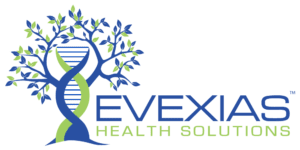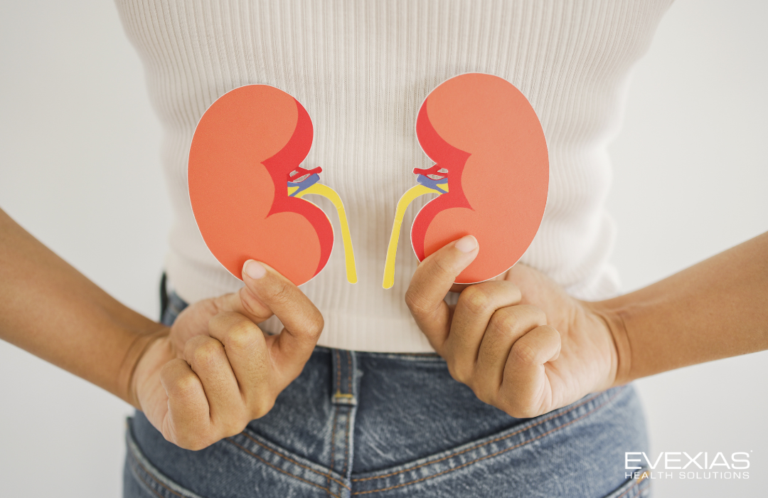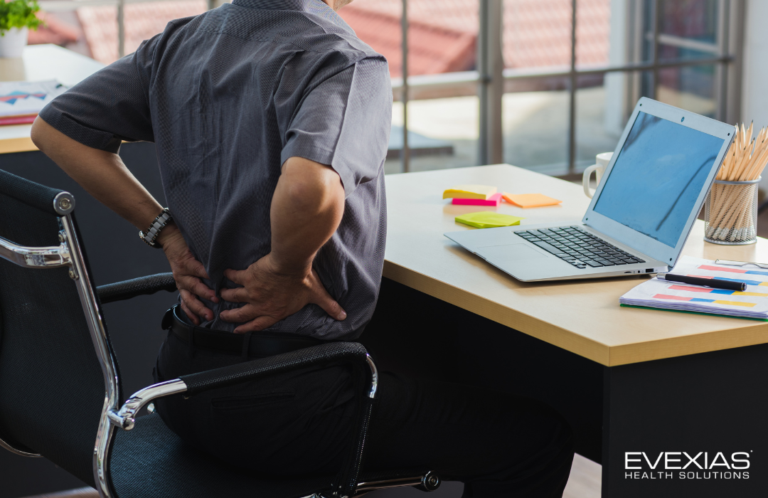When discussing hormone imbalances in men, most people immediately think of testosterone due to the fact that it is the primary male sex hormone and the most common source of male hormonal imbalance. It is known that testosterone levels naturally decline with age. In fact, while the definition of what constitutes testosterone deficiency can vary, some experts have estimated that 10-40 percent of adult males suffer from chronically low testosterone levels. However, other hormones like estrogen and cortisol can also influence male whole body health.
Since there are so many potential symptoms and sources for these hormonal imbalances, the best way to address a hormonal imbalance is to obtain a hormone level analysis through a doctor or integrative medicine specialist. Once armed with a better understanding of an individual case of hormonal imbalance, a highly trained integrative medicine practitioner can then advise whether or not some form of hormone replacement therapy (HRT) is necessary.
Testosterone: The Primary Androgen
Androgens are sex hormones that are responsible for the proper development of the body during puberty as well as reproductive function. Testosterone is the most common and influential male androgen. Low testosterone levels, a condition known as hypogonadism, are also a common condition of the natural male aging process. While declining testosterone levels are a part of the natural aging process in men, testosterone deficiency can also be a result of other factors.
Primary and Secondary Hypogonadism
Before analyzing the various sources of hypogonadism, it is important to understand the differences between primary hypogonadism and secondary hypogonadism.
Primary hypogonadism refers to low testosterone levels caused by the testicles not making sufficient amounts of testosterone. There are several congenital conditions that can contribute to primary hypogonadism, including undescended testicles, absence of testicles at birth, Noonan syndrome, Klinefelter’s syndrome and Leydig cell hypoplasia. There are also other conditions that can contribute to primary hypogonadism after birth, including injury to the testicles, certain types of tumors, anabolic steroid use and chemotherapy or radiation therapy to the testicles.
Secondary hypogonadism refers to low testosterone levels caused by an issue with the hypothalamus and/or pituitary gland. This form of hypogonadism can also be the result of a congenital condition, including Kallmann syndrome and Prader-Willi syndrome. However, the majority of the sources of secondary hypogonadism are acquired conditions. These include Cushing’s syndrome, kidney failure, brain or head injury, alcohol abuse, cirrhosis of the liver and obesity.
The declining testosterone levels that define the natural aging process for men is a form of secondary hypogonadism that is also referred to as late-onset hypogonadism (LOH). Not only is the prevalence of testosterone deficiency known to increase with age, but the prevalence of low testosterone levels in men specifically sees its biggest increase between the ages of 45 and 50.
What Are the Symptoms of Low Testosterone in Men?
Low testosterone levels can lead to a wide variety of symptoms and conditions that have a negative impact on male whole body health, including:
- Hot flashes
- Decreased sex drive
- Erectile dysfunction (ED)
- Increased body fat
- Fatigue
- Decreased muscle mass and strength
- Depressed mood
- Issues with memory and concentration
- Enlarged male breast tissue (gynecomastia)
How Does Estrogen Influence Men’s Health?
Estrogen is often thought of as a women’s hormone, because it is the primary female sex hormone. While its role is far greater in women’s health, estrogen can also exert a large influence over male whole body health due to its interactions with testosterone. It is no coincidence that low testosterone levels often lead to high estrogen levels.
What Are the Symptoms of High Estrogen in Men?
Since low testosterone levels in men are often accompanied by high estrogen levels, these two conditions actually share a lot of common symptoms. This correlation is further bolstered by aromatase, an enzyme that converts testosterone into a form of estrogen known as estradiol. The proliferation of aromatase can also be enhanced by increased body fat, a common male symptom of both low testosterone and high estrogen. High estrogen levels can lead to a wide range of symptoms in men, including:
- Increased body fat
- Decreased sex drive
- Erectile dysfunction (ED)
- Enlarged male breast tissue (gynecomastia)
- Fatigue
- Hair loss
- Decreased muscle mass and strength
- Hot flashes
- Decreased bone density and increased risk of osteoporosis
- Issues with concentrating
What is Cortisol and How Does It Affect Men’s Health?
Cortisol is a hormone so integral to the body’s natural stress response that it is often referred to as the “stress hormone”. Under ideal conditions, cortisol helps the body to return to a balanced state after being confronted with stressful situations. However, repeated and extended exposure to stress can eventually lead to chronic stress. Under this condition, levels of cortisol remain high in the body and actually become detrimental to whole body health. To make matters worse, some experts believe that men experience a more intense stress response than women. High cortisol levels can also be the result of an issue with the pituitary or adrenal glands, so it is important to seek an analysis from a medical professional.
What Are the Symptoms of High Cortisol?
High levels of cortisol can lead to a wide range of symptoms that include:
- Increased body fat
- High blood sugar
- High blood pressure (hypertension)
- Increased risk of cardiovascular disease
- Decreased muscle strength
- Fatigue
- Decreased bone density and increased risk of osteoporosis
The Best Ways for Men to Address Hormone Imbalances
Anyone who suspects that they may be suffering from a hormonal imbalance first needs to gain an understanding of what could be causing the imbalance. It is crucial to speak with a medical professional to make sure that the hormonal imbalance isn’t the result of an injury or disease.
If the hormonal imbalance is found to be LOH caused by the natural aging process, then there are ways to help the body’s hormones find balance.
Analyzing Hormone Levels
Obtaining a hormone level analysis is the best way to confirm if the body is suffering from hormonal imbalance. Testosterone, estrogen and cortisol levels are most often measured using blood tests. After the blood has been sent to a lab, a doctor or integrative medicine practitioner can then analyze the data before deciding the best course of action for addressing any hormone imbalances.
Lifestyle Management Techniques
Fortunately, lifestyle management techniques like exercise and a healthy diet have the potential to promote hormonal balance. Excess body fat and hormonal imbalance are two conditions that feed off one another in a negative feedback loop relationship. Adhering to a healthy diet and exercise routine can have a positive impact on excess body fat, especially in the abdomen. Reducing body fat could potentially support healthy levels of testosterone, estrogen and cortisol. Decreasing excess body fat can also support healthy sleep patterns, which can have a positive effect on hormone levels, especially cortisol.
Hormone Replacement Therapy (HRT)
If healthy lifestyle management techniques alone cannot address a hormone imbalance, then it may be necessary to seek out a more intensive form of therapy like HRT. There are several options for HRT delivery methods, including creams, gels, capsules, liquid injections and pellets.
While hormone pellet therapy has existed for decades, this form of HRT has become increasingly popular due to the fact that a single pellet insertion procedure has the potential to support hormonal balance for months at a time.
The experts at EVEXIAS Health Solutions have further refined hormone pellet technology with the EvexiPEL Method using plant-based hormone pellets. The EvexiPEL method was developed by Terri DeNeui, DNP, APRN, ACNP–BC, Founder and Chief Medical Officer of EVEXIAS Health Solutions after years of tireless research. The EvexiPEL Method was designed to improve the patient experience with enhanced comfort both during and after the pellet insertion procedure. The specialists at EVEXIAS Health Solutions also offer lifestyle management guidance to further enhance the efficacy of The EvexiPEL method. Discover the nearest EvexiPEL provider today to learn more about the best ways to address hormonal imbalance.







